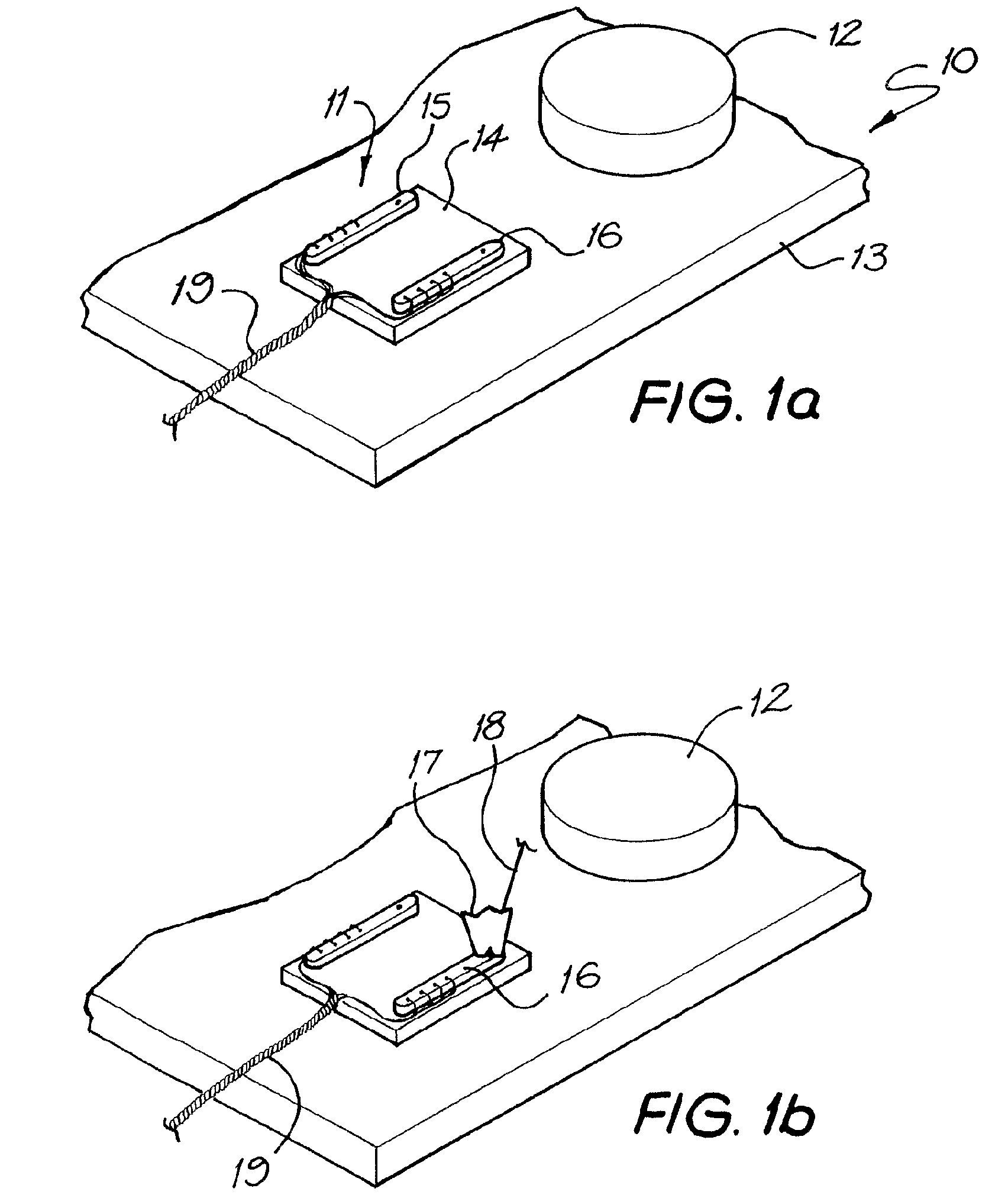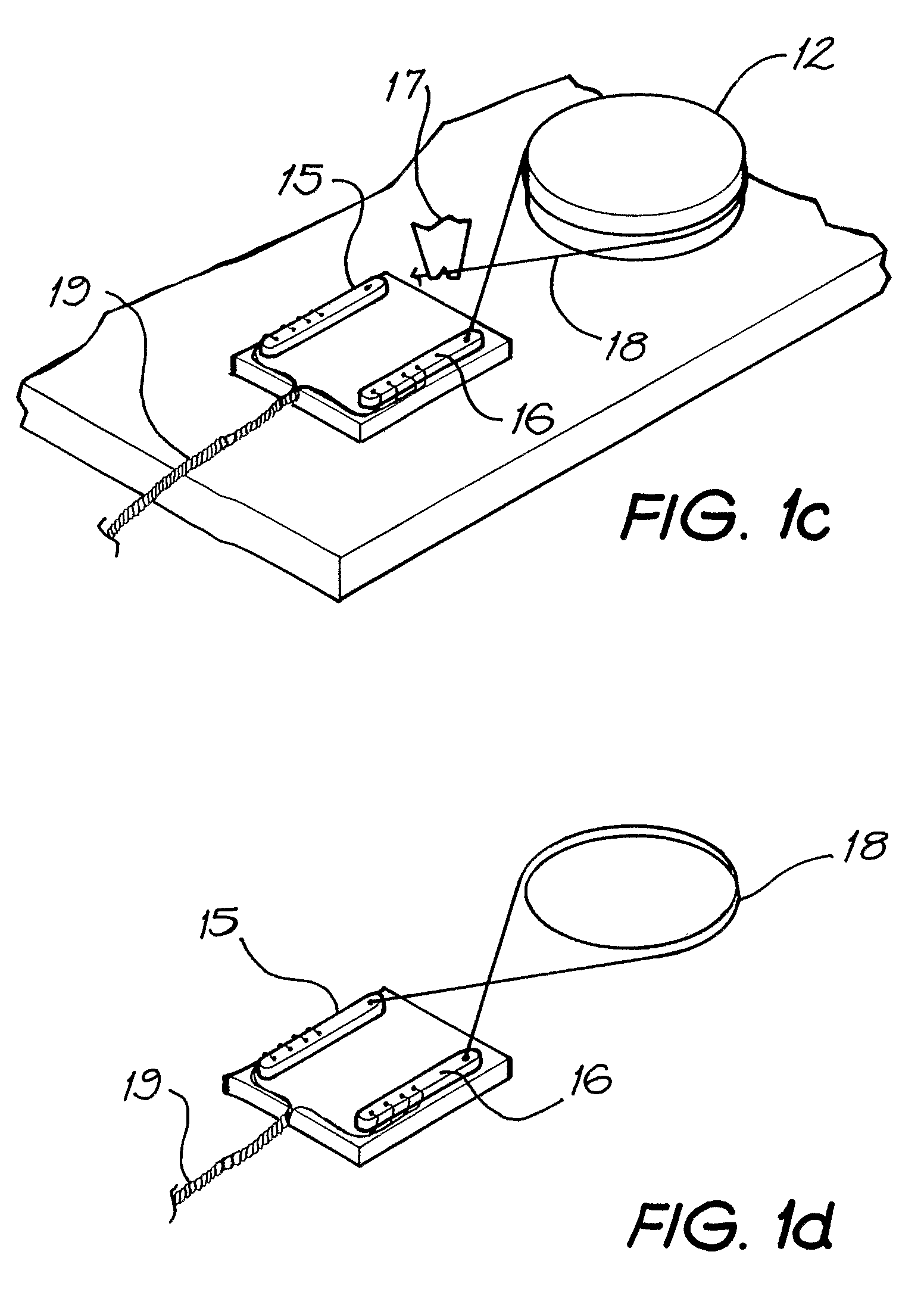Implantable antenna
a technology of connectors and antennas, applied in the direction of antennas, electric signalling details, electromagnetics, etc., can solve the problems of difficult or impossible time-consuming, labor-intensive and specialized crafts, and often labor-intensive manufacturing of wiring and connector components, and achieve the effects of increasing manufacturing throughput, reducing labor costs, and reducing labor costs
- Summary
- Abstract
- Description
- Claims
- Application Information
AI Technical Summary
Benefits of technology
Problems solved by technology
Method used
Image
Examples
Embodiment Construction
FIG. 1 depicts some of the steps of a method according to the present invention, depicted generally as 10, for forming an antenna and feed through assembly that is suitable for use in a tissue-stimulating device, such as a Cochlear™ implant (also referred to as Cochlear™ prostheses, Cochlear™ devices, and the like; for simplicity hereinafter referred to as “cochlear implant”).
As depicted in FIG. 1a, a feedthrough member 11 and an antenna template 12 are mounted to a workspace member 13. The relative position of the member 11 and template 12 are based on the desired dimensions of the antenna to be formed.
In the depicted embodiment the feedthrough member 11 is mountable in a wall or chassis of a housing 14 and comprises a fist portion 15 and a second portion 16, Both of the portions 15,16 have a plurality of conductive posts extending through an electrically insulating block that hermetically seals the housing 14. In the depicted embodiment, the feedthrough member 11 is usable for bot...
PUM
| Property | Measurement | Unit |
|---|---|---|
| thickness | aaaaa | aaaaa |
| thickness | aaaaa | aaaaa |
| thickness | aaaaa | aaaaa |
Abstract
Description
Claims
Application Information
 Login to View More
Login to View More - R&D
- Intellectual Property
- Life Sciences
- Materials
- Tech Scout
- Unparalleled Data Quality
- Higher Quality Content
- 60% Fewer Hallucinations
Browse by: Latest US Patents, China's latest patents, Technical Efficacy Thesaurus, Application Domain, Technology Topic, Popular Technical Reports.
© 2025 PatSnap. All rights reserved.Legal|Privacy policy|Modern Slavery Act Transparency Statement|Sitemap|About US| Contact US: help@patsnap.com



